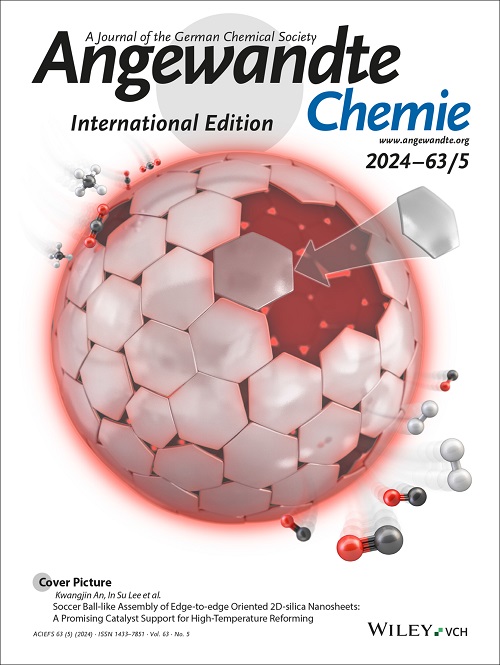Antifreeze Protein Mimics Realizing Stable Low-Temperature-Resistant Aqueous Zn-ion Batteries with High Water Content
IF 16.1
1区 化学
Q1 CHEMISTRY, MULTIDISCIPLINARY
引用次数: 0
Abstract
Rechargeable aqueous metal batteries offer inherent safety and low cost due to the predominance of water in their aqueous electrolytes, yet their practical applications are severely limited by electrolyte freezing under subzero conditions. Drawing inspiration from the mechanism of antifreeze proteins (AFPs) that protect living organisms from freezing damage, we synthesize oxidized quasi-carbon nitride quantum dots (OQCNs) featuring a regularly in-plane structure commensurate with the prism face of hexagonal ice crystal. At an ultralow concentration, the OQCNs effectively mimic AFP functionalities by controlling ice crystal morphology, suppressing ice growth kinetics, and inhibiting ice recrystallization. This synergistic mechanism preserves continuous ion transport pathways while mitigating physical damage to battery components caused by ice crystal growth. Molecular dynamics simulations demonstrate that the Gibbs-Thomson effect underpins the suppression of ice growth, avoiding complete solidification of the electrolyte under subzero conditions. The OQCNs-modified electrolyte exhibits exceptional cryogenic performance at -30°C, with Zn||Zn symmetric cell maintaining stable cycling of 1000 hours and Zn||NH4+-intercalated vanadium oxide (NVO) battery preserving 91.48% capacity retention through 5000 cycles (over 90 days). This work unveils a bioinspired paradigm that significantly enhances the performance of eco-friendly, high-moisture electrolytes, paving the way for robust, low-temperature-resistant zinc-ion batteries and related aqueous electrolyte-based technologies.求助全文
约1分钟内获得全文
求助全文
来源期刊
CiteScore
26.60
自引率
6.60%
发文量
3549
审稿时长
1.5 months
期刊介绍:
Angewandte Chemie, a journal of the German Chemical Society (GDCh), maintains a leading position among scholarly journals in general chemistry with an impressive Impact Factor of 16.6 (2022 Journal Citation Reports, Clarivate, 2023). Published weekly in a reader-friendly format, it features new articles almost every day. Established in 1887, Angewandte Chemie is a prominent chemistry journal, offering a dynamic blend of Review-type articles, Highlights, Communications, and Research Articles on a weekly basis, making it unique in the field.

 求助内容:
求助内容: 应助结果提醒方式:
应助结果提醒方式:


